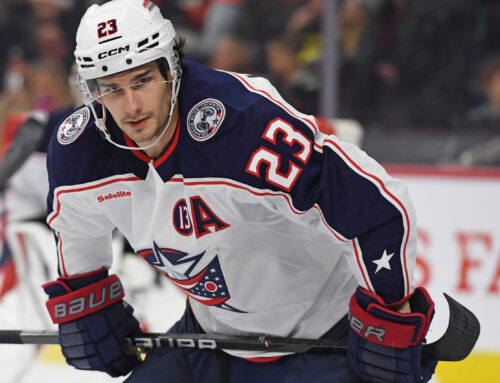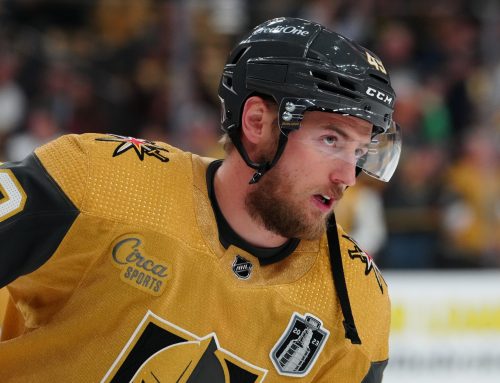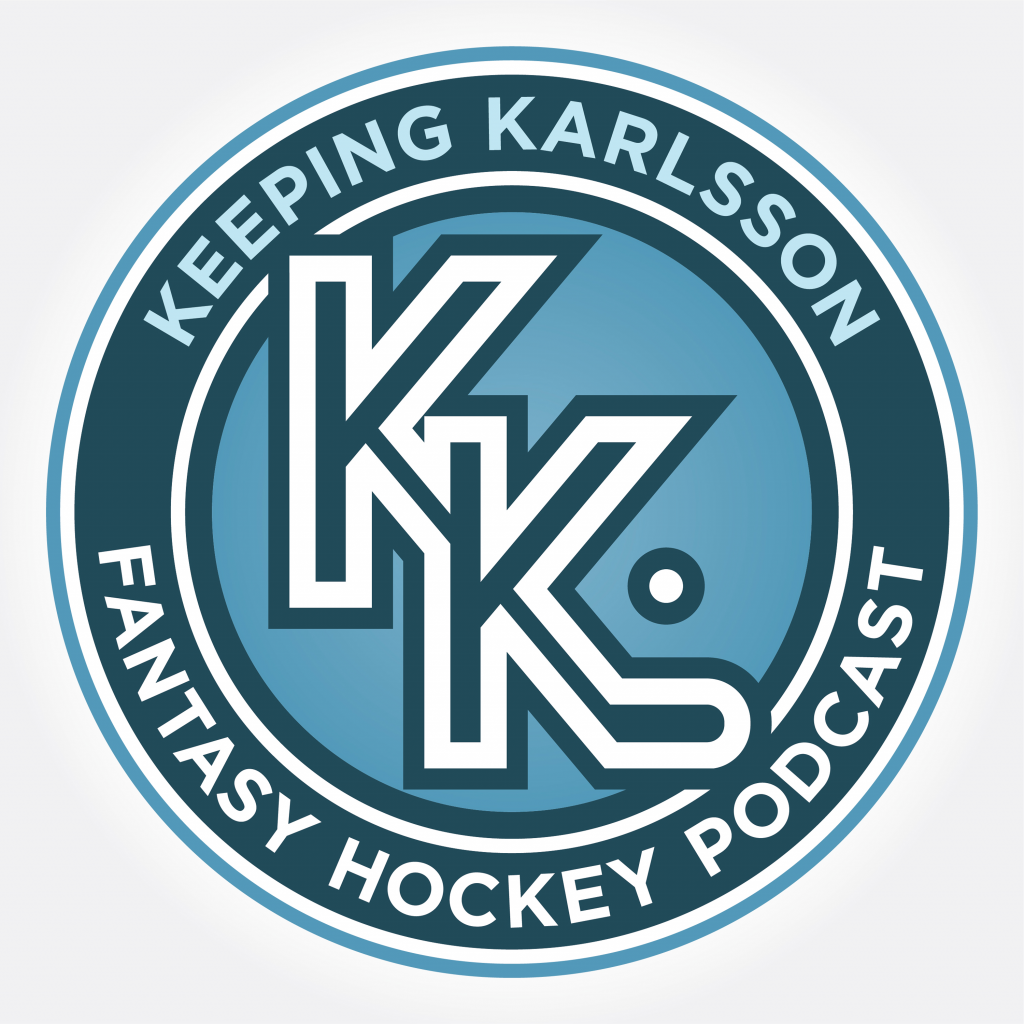This week we are returning to our division reviews and identifying candidates to bounce back and candidates to avoid on draft day. We have already reviewed the Pacific and Central Divisions, so today we move on to the Metro.
As a reminder here is a little context setting from the original article.
In order to make this process a bit more concrete we are going to focus on three stats from the Dobber Reports: five-on-five team shooting percentage (5on5 S%), individual points percentage (IPP), and individual shooting percentage (S%). These are certainly not the end all be all of player evaluation but do tend to flag players who are likely to see a different point pace in the future.
Before jumping into the players, let's do a quick refresher on what these stats tell us. We use team shooting percentage to get an idea of how many points are being scored while a player is on the ice. We use five on five because that is the largest game state for players. Power-play points count just the same on the score sheet so we could look at that as well, but in the interest of cutting down our data points we are going to focus on even the strength number here. IPP, which we will sometimes refer to as a player's points participation number, is how often a player is getting a point on a goal that is scored while they are on the ice. Finally, shooting percentage is just the standard: what percent of a player's shots are going into the net?
With all of these stats I thought it is important to take them into context. Not just what would an average player do, but how does this number compare to their career numbers? In order to do that I grabbed the same data points for the 2024-25 season and am comparing them to each player's recent career average. Broadly speaking and barring changes in the player's situation (changing teams, sudden promotion to a top line etc.), we would expect these numbers to return to that career average.
For our first group we are looking at players whose underlying numbers in question were lower than their recent career averages. Generally, we might expect these numbers to revert back to those averages and therefore those players to have a bit more production in the future.

I will include Daniel Sprong here for completion's sake, and as there really weren't that many players in the Metro who underperformed, but for Sprong it is more about finding consistent playing time than worrying about the underlying numbers. Sprong played 30 games across three teams in 24-25. Sure his 19-point pace was a far cry from some 50(ish)-point pace seasons, but the underlying numbers (like his 3.9 shooting percentage) explain that. He has always been able to score, it is more about finding somewhere that will put up with his less than stellar defensive game and give him enough time to actually put up points.
Mathew Barzal missed a chunk of the season, so it is kind of hard to judge his year regardless, but Barzal's 55-point pace over 30 games was the lowest point pace of his career. There were a lot of challenges on Long Island last season, so I wouldn't read too much into the 30-game sample, particularly since the numbers indicate he deserved better.
I would like to say the same about Anthony Duclair, but this one feels a lot more up in the air. If he returns to favor with the team and gets good deployment, I still think he can put up some reasonable numbers. Unfortunately, we are going to have to wait and see on that one.
Travis Sanheim had a great start to the season, through about mid-December, had clearly won over John Tortorella, and got some good looks on the top power play. The rest of the season went poorly enough that he is now on the 'might bounce back' list. He still got a lot of ice time, so some general opportunity is there, but a lot is up in the air with a new coach.
Andrei Svechnikov also makes the list here, though not by a lot. He only put up a 55-point pace, but most of his metrics weren't off by that much. What he really needs is consistent time next to Sebastian Aho. The stretches of time when he has that (and top power-play time) he does well. He has been inconsistent outside of that.
This whole section is supposed to be about players who disappointed, but whose underlying numbers indicate an opportunity for a bounce back next season. Unfortunately, outside of Barzal, we are looking at a lot of players who are going to be relying on deployment situations as much as a change in fortune.
On the flip side we also have some players whose underlying numbers were a bit higher than we expected, meaning that their production might not be the most sustainable.

Let's hit Aliaksei Protas and Alex Ovechkin at the same time here. Both saw big increases in personal shooting percentage, and that also translated into big increases in the team's five on five shooting percentage with them on the ice. Simply put, there were way more goals than expected scored while they were both on the ice – and they were doing most of that scoring. I like first line Protas, but just not to the tune of 70 points. The whole team has to find an identity now that the goal scoring record is broken. Can they keep the magic going for another season? I think it is going to be a challenge and a more difficult scoring season in Washington.
Noah Cates had a reasonably strong second half of the season even if still ended just shy of a 40-point pace overall. As a player who is typically viewed more as a defensibly responsible depth player he likely won't light up the score sheet, but he got significantly more ice time over that second half averaging almost 18 minutes a night from January on. There have been a lot of changes in Philly, so given that, plus some favorable percentages in 24-25, we should probably temper our expectations a bit.
Kirill Marchenko had a much more fantasy relevant 77-point pace season. Most of that improvement looks pretty good with increases in both his time on ice overall, and his share of the team's power play. He, and Columbus as a whole rode some favorable numbers for most of the season, so a return to 77 points would likely require an even bigger role, and an increase from 2.5 shots per game.
Rickard Rakell put up a career high 70 points in 81 games in 24-25. He also saw over 19 minutes a night on average for the first time since 17-18, and almost 60% of the team's power play. Clearly the increased role and lining up with Sidney Crosby agreed with him. The challenge is that he saw a bit more fortune than he has in years past. Some of that could be playing with Crosby, but if his numbers were more in line with his previous history, he likely scores 22 goals, not 35. That alone drops him to the 55- to 60-point pace range. Playing with someone like Crosby and spending more time on the top power-play are all reasons why his shooting percentage might stay a bit higher than usual, but it certainly is a warning sign for drafters.
Will Cuylle was a revelation to start the season with 22 points in his first 27 games. He basically disappeared after that, with a brief resurgence in March, but ended the season with 45-point pace, but with 300 hits. Particularly in the early going when he was scoring and hitting, he was a gold mine of fantasy value in many league formats. Even with the significantly cooler end of season that 45-point pace is still looking a little too hot for Cuylle. He did increase his time on ice to about 15 minutes a night, but will need significantly more power-play time, and to increase his shot rates to really break out sustainably.
That is all for this week.
Do your part to support organizations working to make hockey for everyone.





 FLA
FLA CHI
CHI NYR
NYR PIT
PIT L.A
L.A COL
COL CAR
CAR MIN
MIN STL
STL OTT
OTT CBJ
CBJ NSH
NSH BUF
BUF
